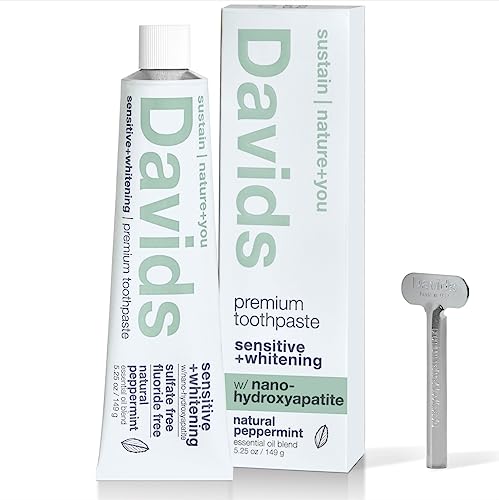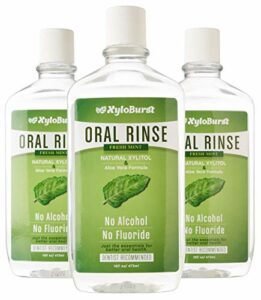We know that navigating the world of dental care can sometimes be overwhelming. With so many products and technologies available, it’s easy to feel lost and unsure about what is truly beneficial for our oral health. That’s why we are here to help you understand one of the latest advancements in dental care: nano hydroxyapatite. In this post, we will break down the concept of nano hydroxyapatite and explain its significance in maintaining a healthy smile. So, if you’ve ever wondered what nano hydroxyapatite is all about, this post is for you. Let’s dive in and unravel the mysteries together!
Discover the Most Sought-After Nano Hydroxyapatite Products
What is Nano Hydroxyapatite?
Nano hydroxyapatite is a remarkable bioactive material that has gained popularity in the dental field for its ability to repair and strengthen teeth. Let’s delve deeper into what exactly nano hydroxyapatite is and why it is widely used in dental products and treatments.
Understanding Nano Hydroxyapatite
Composition Similar to Natural Tooth Enamel
Nano hydroxyapatite closely resembles the composition of natural tooth enamel, making it an ideal material for dental applications. Tooth enamel is primarily made up of hydroxyapatite crystals, which are responsible for its strength and durability. By utilizing nano-sized particles of hydroxyapatite, dental products and treatments can effectively mimic the natural properties of tooth enamel.
Nanoparticles Enhancing Bioactivity
The nano-sized particles of hydroxyapatite used in dental products have a high surface area-to-volume ratio. This unique characteristic allows for better integration with the tooth structure and enhances the material’s bioactivity. Nano hydroxyapatite actively interacts with the tooth surface, promoting remineralization and helping to repair damaged enamel.
Versatility and Compatibility
Nano hydroxyapatite can be incorporated into various dental products, including toothpaste, mouthwash, and dental fillings. It is compatible with other dental materials, making it an excellent choice for restorative procedures. Its versatile nature allows for a wide range of dental applications, catering to different dental needs.
Benefits of Nano Hydroxyapatite
Utilizing nano hydroxyapatite in dental products and treatments can provide numerous benefits. Here are some key advantages:
Remineralization and Tooth Repair
- Nano hydroxyapatite promotes remineralization of tooth enamel, helping to repair and strengthen teeth.
- It restores essential minerals, such as calcium and phosphate, to the tooth structure, effectively reversing early tooth decay.
Sensitivity Relief
- Nano hydroxyapatite forms a protective layer over exposed dentin, reducing tooth sensitivity to hot or cold stimuli.
- It helps to block open dentinal tubules, preventing the transmission of pain signals.
Surface Smoothing and Whitening
- Nano hydroxyapatite particles gently polish the tooth surface, removing surface stains and smoothing out rough areas.
- It can contribute to a brighter, whiter smile by restoring the natural luster of teeth.
Bioactive Protection
- Nano hydroxyapatite creates a protective barrier on the tooth surface, shielding it from harmful acids and bacteria.
- It aids in preventing tooth decay and the formation of cavities.
Benefits of Nano Hydroxyapatite
Maintaining good oral health is essential for overall well-being. One innovative solution that has gained attention in recent years is nano hydroxyapatite. This natural mineral compound has proven to be highly beneficial for teeth and gums, offering a range of advantages that can significantly improve oral health. In this blog section, we will explore the various benefits of nano hydroxyapatite and why it is worth considering as a part of your dental care routine.
Remineralization of Tooth Enamel
One of the key benefits of nano hydroxyapatite is its ability to remineralize tooth enamel. Over time, our teeth can become demineralized due to factors such as poor oral hygiene, acidic food and drinks, and bacteria. This can lead to weakened enamel and an increased risk of cavities and tooth sensitivity. Nano hydroxyapatite works by replacing lost minerals, strengthening the enamel and reducing the risk of dental problems.
Regeneration of Damaged Tooth Surfaces
Nano hydroxyapatite has been found to promote the regeneration of damaged tooth surfaces. Whether it’s small cracks, surface erosion, or enamel wear, this mineral compound can help restore the integrity of your teeth. By encouraging the growth of new hydroxyapatite crystals, nano hydroxyapatite effectively repairs and rebuilds damaged tooth surfaces, restoring their natural strength and appearance.
Prevention of Plaque Formation
Plaque buildup is a common dental issue that can lead to various oral health problems, including gum disease and tooth decay. Nano hydroxyapatite has shown promising results in preventing plaque formation. Its unique properties enable it to create a protective barrier on the tooth surface, making it more difficult for plaque-causing bacteria to adhere. By inhibiting plaque formation, nano hydroxyapatite helps maintain a clean and healthy oral environment.
Tooth Sensitivity Relief
Tooth sensitivity can cause discomfort and pain when consuming hot or cold foods and beverages. Nano hydroxyapatite can provide relief for sensitive teeth by forming a protective layer on the exposed dentin. This layer acts as a barrier, reducing the sensitivity and allowing you to enjoy your favorite foods and drinks without discomfort.
Comparison Table: Nano Hydroxyapatite vs. Traditional Toothpastes
| Nano Hydroxyapatite | Traditional Toothpastes |
|---|---|
| Remineralizes tooth enamel | May contain fluoride for enamel protection |
| Promotes regeneration of surfaces | May contain abrasive ingredients for surface polishing |
| Helps prevent plaque formation | May contain antibacterial agents to fight plaque buildup |
| Relieves tooth sensitivity | May contain desensitizing agents for temporary relief |
Applications of Nano Hydroxyapatite
Nano hydroxyapatite is a versatile material that finds applications in various dental products and cosmetic dentistry procedures. Its unique properties make it an excellent choice for maintaining oral health and enhancing the appearance of teeth. In this blog section, we will explore the different applications of nano hydroxyapatite and understand how it can benefit you.
Dental Products
Toothpaste
Nano hydroxyapatite toothpaste has gained popularity in recent years due to its remarkable effectiveness in tooth remineralization and cavity prevention. Its small particle size allows it to penetrate deep into the enamel, restoring lost minerals and strengthening the teeth. Some key benefits of using nano hydroxyapatite toothpaste include:
- Remineralization: Nano hydroxyapatite can replenish lost minerals in the tooth enamel, making it stronger and more resistant to decay.
- Cavity prevention: Regular use of nano hydroxyapatite toothpaste can reduce the risk of cavities by forming a protective layer over the teeth.
- Sensitivity relief: It can help alleviate tooth sensitivity by sealing exposed dentinal tubules.
Mouthwash
Nano hydroxyapatite mouthwash offers a convenient way to maintain oral hygiene and promote gum health. It helps in preventing plaque formation and reducing the risk of gum diseases. The benefits of using nano hydroxyapatite mouthwash include:
- Plaque prevention: Nano hydroxyapatite can inhibit the adhesion of oral bacteria, preventing plaque formation.
- Gum health: It has been shown to have anti-inflammatory properties, promoting healthy gums and reducing the risk of gum diseases.
- Fresh breath: Nano hydroxyapatite mouthwash can effectively neutralize bad breath-causing compounds, giving you long-lasting fresh breath.
Dental Fillings
Nano hydroxyapatite is also used as a filler material in dental restorations. Its biocompatibility and ability to bond with tooth structure make it an ideal choice for dental fillings. Some advantages of using nano hydroxyapatite in dental fillings include:
- Natural appearance: Nano hydroxyapatite fillings closely mimic the natural color and translucency of teeth, providing excellent aesthetic results.
- Biocompatibility: It is well-tolerated by the body, reducing the chances of adverse reactions or allergies.
- Strengthening effect: Nano hydroxyapatite fillings can strengthen the tooth structure, improving its durability and resistance to wear.
Cosmetic Dentistry Procedures
Tooth Whitening
Nano hydroxyapatite toothpaste and gels are commonly used in tooth whitening procedures. They work by gently removing surface stains and brightening the teeth. The advantages of using nano hydroxyapatite for tooth whitening include:
- Gentle on enamel: Unlike some harsh whitening agents, nano hydroxyapatite is gentle on the tooth enamel, minimizing the risk of sensitivity or damage.
- Long-lasting results: Nano hydroxyapatite particles can penetrate the enamel, providing longer-lasting whitening effects compared to superficial treatments.
Enamel Restoration
Nano hydroxyapatite can help in restoring the enamel’s appearance and improving its strength. It can be used in cosmetic dentistry procedures such as enamel microabrasion and enamel remineralization treatments. The benefits of using nano hydroxyapatite for enamel restoration include:
- Smoothens enamel surface: Nano hydroxyapatite can help remove surface irregularities and restore a smooth surface to the enamel.
- Strengthens enamel: It replenishes lost minerals, making the enamel stronger and more resistant to acid erosion.
In conclusion, nano hydroxyapatite finds extensive applications in dental products and cosmetic dentistry procedures. Its ability to remineralize teeth, prevent cavities, and enhance the appearance of teeth makes it a valuable asset in maintaining oral health and achieving a beautiful smile. Consider incorporating nano hydroxyapatite-based dental products into your oral care routine to reap the benefits it offers.
Source
Considerations when using Nano Hydroxyapatite
Nano hydroxyapatite is a popular ingredient in oral care products due to its ability to strengthen tooth enamel, reduce tooth sensitivity, and promote remineralization. While it is generally safe to use, there are a few considerations that should be taken into account before incorporating it into your oral care routine. In this blog post, we will explore these considerations and provide you with important information to help you make an informed decision.
Consultation with Your Dentist
Before using any new oral care product, it is always recommended to consult with your dentist. They will be able to assess your dental health and advise you on the suitability of nano hydroxyapatite for your specific needs. Your dentist can also guide you on the proper usage and frequency of application to ensure optimal results.
Dental Conditions
Some individuals may have specific dental conditions that require extra caution when using nano hydroxyapatite. It is important to discuss any existing dental issues with your dentist to determine if using products containing nano hydroxyapatite is appropriate. Some dental conditions that may need consideration include:
- Tooth decay: If you have active tooth decay, it is important to address this issue before incorporating nano hydroxyapatite into your oral care routine.
- Gum disease: Individuals with gum disease may require additional treatment and maintenance before using nano hydroxyapatite products.
- Dental restorations: If you have dental restorations such as fillings, crowns, or veneers, it is important to consult with your dentist as nano hydroxyapatite products may interact differently with these restorations.
Allergies
While allergies to nano hydroxyapatite are rare, it is always important to check the ingredient list of the product you intend to use. If you have any known allergies to hydroxyapatite or any other components, it is best to avoid using products containing nano hydroxyapatite to prevent any adverse reactions.
Safety Precautions
When using nano hydroxyapatite products, it is important to follow the instructions provided by the manufacturer. Here are a few safety precautions to keep in mind:
- Do not swallow: Nano hydroxyapatite products are designed for topical use only. Avoid swallowing the product to prevent any potential gastrointestinal issues.
- Use in moderation: While nano hydroxyapatite is beneficial for tooth enamel, excessive use may lead to enamel erosion. It is recommended to follow the recommended usage guidelines provided by the manufacturer or your dentist.
The Promising Future of Nano Hydroxyapatite
In conclusion, we have learned that nano hydroxyapatite is an important component in dental care that provides several advantages, including remineralizing enamel and preventing plaque. However, it is crucial to consult with dental professionals before incorporating any oral care products with nano hydroxyapatite into our routines. Taking this step will ensure we make informed decisions about our dental health and receive the best possible care.
Frequently Asked Questions about Nano Hydroxyapatite
Can you explain the process of synthesizing nano hydroxyapatite and any challenges involved in its production?
Certainly, we can explain the process of synthesizing nano hydroxyapatite and the challenges involved in its production.
Nano hydroxyapatite is a form of calcium phosphate that is widely used in various fields, including medicine, dentistry, and materials science. The synthesis of nano hydroxyapatite involves several steps.
Firstly, a calcium source, often calcium nitrate or calcium hydroxide, is dissolved in water to form a calcium solution. Then, a phosphate source, such as diammonium hydrogen phosphate or ammonium dihydrogen phosphate, is added to the calcium solution. This step allows the precipitation of calcium phosphate.
The next step involves adjusting the pH of the solution to promote the formation of hydroxyapatite. This can be achieved by adding ammonium hydroxide or sodium hydroxide to the solution. The pH adjustment is crucial as it determines the stability and purity of the resulting nano hydroxyapatite particles.
After achieving the desired pH, the solution is typically subjected to hydrothermal treatment. This involves heating the solution at elevated temperatures and pressures to facilitate the growth of nano-sized hydroxyapatite crystals. The duration of the hydrothermal treatment can vary depending on the desired particle size and morphology.
Now, let’s talk about the challenges involved in the production of nano hydroxyapatite. One challenge is achieving uniform particle size and shape control. Obtaining nanoparticles with consistent characteristics is crucial for their specific applications. Controlling factors such as reaction conditions, pH, temperature, and reaction time is essential to achieve desired particle properties.
Another challenge is the potential formation of impurities during synthesis. Since the synthesis process involves various chemical reactions, it is important to carefully select high-purity starting materials and control the reaction conditions to minimize impurity formation. Impurities can have an adverse effect on the properties and performance of nano hydroxyapatite.
Furthermore, scaling up the production of nano hydroxyapatite from lab-scale to industrial-scale can be challenging. The synthesis conditions that work well in small-scale experiments may not necessarily be directly applicable to large-scale production. Parameters such as reaction kinetics, heat and mass transfer, and mixing efficiency need to be carefully optimized to ensure consistent and efficient production.
In conclusion, the synthesis of nano hydroxyapatite involves the precipitation of calcium phosphate, pH adjustment, and hydrothermal treatment. Challenges in its production include achieving uniform particle size and shape control, minimizing impurity formation, and scaling up the production process. Overcoming these challenges is crucial to ensure the quality and suitability of nano hydroxyapatite for various applications.





















